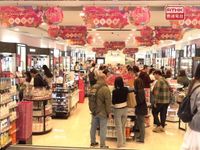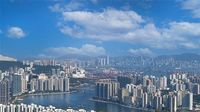As of February 2025, Hong Kong has recorded a modest increase in its overall consumer prices, with a rise of 1.4% year-on-year. This increase, however, marks a decline from January's more significant 2% rise, according to the Census and Statistics Department.
The narrowing increase is primarily attributed to the timing of the Lunar New Year celebrations, which fell in February 2024, leading to a higher base for price comparison. High demand and prices during the festive period typically influence costs, particularly in areas like food and travel, which are significant contributors to the Consumer Price Index (CPI).
When taking into account the effects of government relief measures, the underlying inflation rate for February 2025 stands at 1.1%. This figure is lower than the previous month’s rate of 1.6%, indicating a trend of stabilizing inflation pressures. A representative from the Census and Statistics department stated, “The year-on-year figures for January and February can be volatile due to the Lunar New Year’s timing.”
This year’s celebrations took place in January, which means that both January and February’s data have been influenced by this seasonal shift. To provide a clearer picture, analysts have combined data from the two months, finding that the CPI has risen 1.7% when the Lunar New Year impact is factored out. Furthermore, after adjusting for government one-off relief measures, a corresponding increase of 1.3% was observed, consistent with levels seen in December 2024.
Among the various categories contributing to the CPI, notable year-on-year price increases in February 2025 were recorded in tobacco and alcohol, which surged by a staggering 20.9%. Following this, prices for electricity, gas, and water rose by 13.3%, while transportation saw an increase of 2.6%. Price changes in housing were recorded at 1.6%, miscellaneous goods at 1.4%, meals out and takeaways at 1.2%, and miscellaneous services also at 1.2%.
There were, however, decreases in certain categories, such as basic foods, which declined by 1.9%, alongside clothing and footwear, which also saw a drop of 1.9%. Durable goods registered a lower price point, decreasing by 1.1%. With these fluctuations, underlying consumer price inflation is characterized as mild at the beginning of the year.
The Hong Kong government remains cautiously optimistic about inflation trends, asserting that price pressures from the main components of the CPI are largely under control. The government's current outlook anticipates that overall inflation should remain moderate in the short term, though it acknowledges potential local cost pressures arising from ongoing economic growth.
A spokesperson for the government commented on the external price pressures, stating, “While these pressures should remain largely controlled, the uncertainties arising from geopolitical tensions and trade frictions are factors that continue to merit attention.” These observations reflect careful monitoring of the interplay between local economic conditions and global influences, particularly as Hong Kong navigates its post-pandemic recovery.
In essence, while February's CPI signifies a slowing inflation rate when juxtaposed against the highs of the previous year, it also highlights the intricate relationship between seasonal economic activities and broader market conditions. As the year unfolds, both authorities and economists will be closely scrutinizing these indicators to gauge the health of Hong Kong’s economy in the context of both local and global trends.
The population remains alert to the fluctuating economic landscape—and as purchasing power and cost-of-living adjustments become more pronounced—government measures and interventions may also evolve in response to changing inflation expectations.
This report underlines the importance of continuous monitoring of inflation indicators, especially with the looming uncertainties facing the economy in an increasingly interconnected world.






